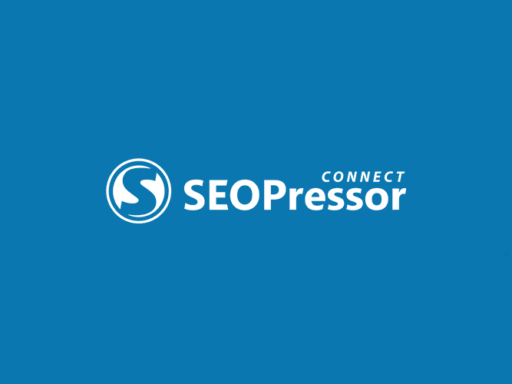A website and a landing page serve different purposes in the digital marketing landscape. Understanding the difference between the two is essential for optimizing your online presence and achieving your desired conversions. Let’s explore the disparities between websites and landing pages to help you make informed decisions for your business goals.
Key Takeaways:
- A website is a collection of web pages that provide comprehensive information about a business or organization.
- A landing page is a stand-alone page designed for a specific goal or campaign.
- Websites are used to establish an online presence, provide information about products and services, and engage with visitors.
- Landing pages focus on conversions and getting visitors to take a specific action.
- Landing pages are highly targeted and optimized for conversions.
Purpose of Landing Pages
A landing page serves a specific goal or purpose within a marketing campaign. Unlike a website, which provides comprehensive information about a business or organization, a landing page is designed with a singular focus: conversions. It is optimized to encourage visitors to take a specific action, such as signing up for a newsletter, making a purchase, or registering for an event.
Landing pages are highly targeted and tailored to a specific audience, with clear calls to action and minimal distractions. The goal is to guide visitors through a streamlined experience that leads to a desired conversion. By eliminating unnecessary information and focusing on a single objective, landing pages increase the likelihood of successful lead generation and help drive sales.
In marketing campaigns, landing pages play a crucial role in capturing and converting leads. By directing traffic to a dedicated landing page, businesses can optimize their messaging and design to maximize the effectiveness of their marketing efforts. The strategic placement of compelling content and persuasive visuals on a landing page can significantly enhance the chances of converting potential customers into paying ones.
Overall, landing pages provide a valuable tool for businesses to target specific audiences, encourage conversions, and achieve their marketing objectives. By utilizing landing pages effectively, businesses can enhance their lead generation efforts and optimize the success of their marketing campaigns.
Components of a Landing Page
A well-designed landing page consists of several key components that are instrumental in optimizing conversions and driving user actions. By carefully incorporating these elements into your landing page, you can create an engaging and persuasive user experience that maximizes your conversion rate.
1. Compelling Headline
The headline is the first thing visitors see when they arrive on your landing page. It should be concise, attention-grabbing, and aligned with your campaign’s messaging. A powerful headline sets the tone for the rest of the page and entices visitors to keep reading.
2. Engaging Copy
The body copy on your landing page should clearly communicate the value proposition of your offer, product, or service. It should be concise, persuasive, and focused on the benefits to the user. Use compelling language that resonates with your target audience and convinces them to take action.
3. Persuasive Imagery or Videos
Visual content plays a crucial role in capturing the attention of visitors and conveying your message. Use high-quality images, videos, or graphics that are relevant to your offer and support your overall messaging. Visual elements can significantly enhance the engagement and effectiveness of your landing page.
4. Social Proof
Building trust and credibility is essential in convincing visitors to convert. Incorporate social proof in the form of testimonials, reviews, case studies, or success stories to showcase the positive experiences of your customers. This provides reassurance and encourages visitors to follow suit.
5. Clear Call to Action
A prominent and clearly defined call to action (CTA) is critical for driving conversions on your landing page. Make sure your CTA stands out, communicates the intended action, and creates a sense of urgency or incentivizes visitors to take the desired step. The CTA should be easily identifiable and strategically placed to encourage clicks.
6. Lead Capture Form
A lead capture form allows you to collect visitors’ information, such as their email addresses or phone numbers. Keep the form simple and concise, requesting only essential information. Minimize the number of fields to reduce friction and increase the likelihood of form submissions.
| Component | Importance |
|---|---|
| Compelling Headline | High |
| Engaging Copy | High |
| Persuasive Imagery or Videos | High |
| Social Proof | Medium |
| Clear Call to Action | High |
| Lead Capture Form | Medium |
The table above highlights the importance of each component in optimizing the performance of your landing page. While all components contribute to its overall effectiveness, certain elements, such as the headline, copy, and call to action, have a higher impact on conversions.
By strategically implementing these crucial components, you can create a compelling landing page that not only attracts visitors but also encourages them to take the desired action.
Purpose of Websites
A website serves as the main hub for your business or organization’s online presence. It plays a crucial role in establishing your brand, showcasing your products or services, and engaging with visitors. A well-designed website provides comprehensive information and fosters trust, encouraging visitors to take further action.
With multiple pages and sections, websites offer a versatile platform to share information about your company, values, mission, and more. Let’s take a closer look at the key purposes of a website:
1. Online Presence
Your website serves as the central hub for your online presence. It’s where potential customers, clients, or supporters can go to learn more about who you are and what you offer. A website boosts your credibility and legitimacy, demonstrating that you are a professional and trustworthy entity in your industry.
2. Information Source
A website is a valuable tool for providing comprehensive information about your products or services. It allows you to present detailed descriptions, specifications, features, and benefits, helping visitors make informed decisions. You can also showcase case studies, testimonials, or success stories to further build trust and credibility.
3. Engagement and Interaction
Your website provides a platform for engaging with visitors and fostering interaction. Through blog posts, articles, or videos, you can share valuable content and establish yourself as an authority in your field. Interactive features like contact forms, chatbots, or social media integration encourage visitors to connect with you, providing opportunities for lead generation and customer support.
4. Branding and Design
Your website is an essential element of your branding strategy. It allows you to showcase your brand’s visual identity, such as logos, color schemes, and typography. Consistent branding across your website helps to establish recognition and reinforce your brand’s values and personality.
5. Online Sales and E-commerce
If you sell products or services online, your website can serve as an e-commerce platform. You can create product pages, shopping carts, and secure payment gateways. An optimized website with a seamless purchasing experience can significantly contribute to driving sales and increasing conversions.
With the purpose of engagement, information dissemination and online presence, websites are an essential tool for businesses and organizations to establish and promote their brand.
| Purpose | Description |
|---|---|
| Online Presence | Serves as the central hub for your online presence, enhancing credibility and legitimacy. |
| Information Source | Provides comprehensive information about your products or services to help visitors make informed decisions. |
| Engagement and Interaction | Fosters interaction with visitors through valuable content, contact forms, and social media integration. |
| Branding and Design | Reinforces your brand’s visual identity and personality to establish recognition. |
| Online Sales and E-commerce | Enables the sale of products or services online through e-commerce functionality. |
Differences in Functionality
The key difference between a website and a landing page lies in their functionality. Websites are multifunctional and can have multiple goals and purposes. They provide a wide range of information and resources to visitors, allowing them to explore different aspects of a business. On the other hand, landing pages are highly focused on achieving a specific goal or conversion. They are streamlined and optimized to guide visitors towards a single call to action.
Website Functionality and Goals
Websites have a broad range of functionality and goals. They serve as a comprehensive online platform for a business, providing information about products, services, company background, and more. The primary purpose of a website is to establish an online presence and engage with visitors. Some common goals of websites include:
- Providing information about products and services
- Showcasing company values and mission
- Generating leads and inquiries
- Conducting e-commerce transactions
- Building brand awareness
Websites are designed to cater to a wide range of visitors and provide them with the resources they need to make informed decisions.
Landing Page Functionality and Goals
Landing pages, on the other hand, have a singular focus and specific goals. They are created for targeted marketing campaigns and are optimized to drive conversions. Landing pages aim to capture the attention of visitors and guide them towards a specific call to action. Some common goals of landing pages include:
- Collecting email addresses for newsletter sign-ups
- Encouraging visitors to make a purchase
- Promoting a limited-time offer or discount
- Driving event registrations
- Converting website visitors into leads
Landing pages are designed to minimize distractions and provide a clear path to conversion, increasing the chances of achieving the desired goal.
Comparison of Website and Landing Page Functionality
| Website | Landing Page |
|---|---|
| Multiple goals and purposes | Single goal or conversion focus |
| Comprehensive information and resources | Streamlined and optimized content |
| Caters to a broad range of visitors | Targets specific audience |
| Engages visitors and encourages exploration | Guides visitors towards a single call to action |
Target Audience and Traffic Sources
Websites are designed to cater to a broad target audience and attract organic traffic from various sources such as search engines, social media, and referrals. They aim to provide valuable information to a wide range of visitors.
In contrast, landing pages are typically used in paid advertising campaigns and target a specific audience. They are optimized for converting traffic from paid sources such as Google Ads or Facebook Ads.
Customization and Flexibility
When it comes to customization and flexibility, landing pages and websites have different strengths. Landing pages offer a high level of customization, allowing you to tailor them to specific campaigns or offers. This means you can create targeted messaging and design elements that resonate with your audience and drive conversions. Whether it’s changing the color scheme, adjusting the layout, or incorporating personalized content, landing pages give you the freedom to customize your campaigns for maximum impact.
Websites, on the other hand, offer more flexibility in terms of structure and content. With a website, you have the ability to include multiple pages and sections, providing a comprehensive overview of your business or organization. You can create different sections for products, services, about us, blog, and more. This flexibility allows you to showcase your brand in a more holistic way, providing visitors with a deeper understanding of what you offer and who you are.
Customization and Flexibility Comparison
| Landing Pages | Websites |
|---|---|
| Highly customizable for specific campaigns or offers | Flexibility in terms of structure and content |
| Targeted messaging and design elements | Comprehensive overview of the business |
| Allows for personalized content | Ability to create different sections for various purposes |
As you can see, landing pages excel in customization and targeting, while websites offer a broader scope and more extensive content possibilities. Both have their advantages depending on your goals and campaigns.
Cost and Implementation
When it comes to cost and implementation, there are some notable differences between landing pages and websites. Both require a domain name and web hosting, but landing pages are generally easier and cheaper to create.
Landing pages can be built using landing page builders or plugins, which offer user-friendly interfaces and pre-designed templates. These tools significantly simplify the creation process, requiring minimal technical knowledge or coding skills. The cost of hosting a landing page is also typically lower compared to a full-fledged website.
Websites, on the other hand, often require more investment in terms of design, development, and ongoing maintenance. They involve more complex coding and design work, especially if customization and unique features are desired. Additionally, websites may incur additional costs such as domain registration and ongoing updates to keep the site up to date and secure.
In summary, while landing pages offer a more cost-effective and user-friendly implementation, websites require a greater investment in terms of time, resources, and budget.
Conclusion
In conclusion, understanding the differences between websites and landing pages is crucial for optimizing your online presence and achieving your business goals. Websites are the foundation of your online branding and provide comprehensive information to engage a broad audience. On the other hand, landing pages are laser-focused on conversions and are designed for targeted marketing campaigns.
By utilizing both websites and landing pages effectively, businesses can create a cohesive online strategy that drives traffic, engages visitors, and converts them into customers. Websites serve as the main hub for your online presence, allowing visitors to explore different aspects of your business and make informed decisions. Meanwhile, landing pages are the key to maximizing conversions by providing a streamlined and optimized user experience with a clear call to action.
Optimizing your online presence involves leveraging the strengths of both websites and landing pages. Websites provide a comprehensive overview and a broader reach, while landing pages offer focused messaging and goal-oriented campaigns. By balancing these two elements, businesses can enhance their online visibility, attract the right target audience, and ultimately achieve higher conversions and online success.
FAQ
What is the difference between a website and a landing page?
A website is a collection of web pages that provides comprehensive information about a business or organization, while a landing page is a stand-alone page designed for a specific goal or campaign.
What is the purpose of landing pages?
Landing pages are specifically designed to achieve a single goal or purpose, such as getting visitors to sign up for a newsletter, make a purchase, or register for an event. They are highly targeted and optimized for conversions.
What are the key components of a landing page?
A well-designed landing page has a compelling headline, engaging copy, persuasive imagery or videos, social proof in the form of testimonials or reviews, a clear call to action, and a lead capture form.
What is the purpose of websites?
Websites serve as the main hub for a business or organization’s online presence. They provide comprehensive information about the company, its products or services, and its values.
What is the difference in functionality between websites and landing pages?
Websites are multifunctional and can have multiple goals and purposes, while landing pages are highly focused on achieving a specific goal or conversion.
What is the target audience and traffic sources for websites and landing pages?
Websites are designed to cater to a broad target audience and attract organic traffic from various sources such as search engines, social media, and referrals. Landing pages are typically used in paid advertising campaigns and target a specific audience.
How customizable and flexible are landing pages and websites?
Landing pages offer a high degree of customization and flexibility, allowing for targeted messaging and design. Websites offer more flexibility in terms of structure and content, with multiple pages and sections.
What is the cost and implementation process for landing pages and websites?
Landing pages are easier and cheaper to create, often using landing page builders or plugins. Websites require more investment in design, development, and maintenance. Both require a domain name and web hosting.
What is the conclusion about websites vs landing pages?
Understanding the differences between websites and landing pages is crucial for optimizing your online presence and achieving your business goals. By utilizing both effectively, businesses can create a cohesive online strategy that drives traffic, engages visitors, and converts them into customers.





